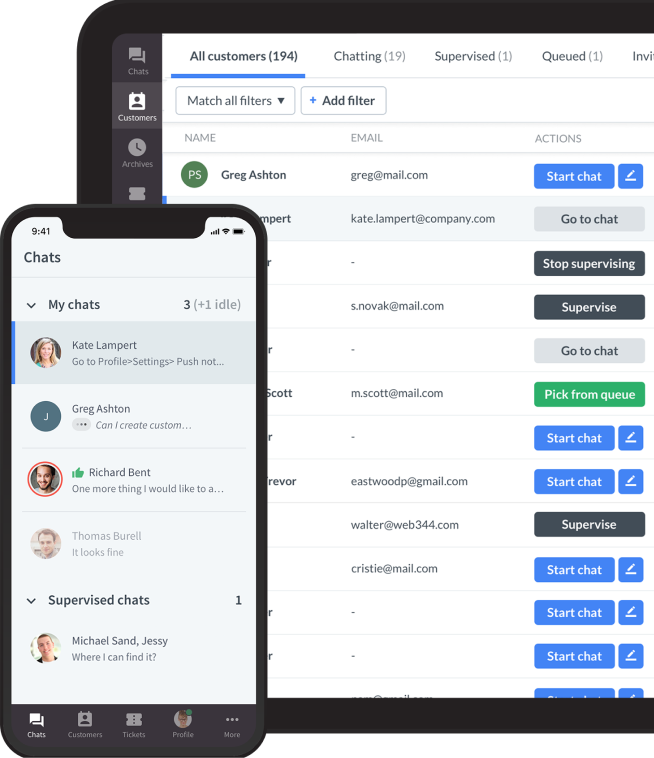Reporting Pipelines From LiveChat Online Aligned With Management Information Governance

As well as providing client information, our LiveChat offers substantial obstacles. Although it generates useful data, it poses significant privacy, security, and compliance problems.
Smart, automatic reporting must fix this issue. That chaotic chat data should become tidy, regulated information that managers can use.

There is one basic rule: from data collection to dashboard creation, everything will be built to suit our information governance architecture. Our reports are designed to be useful, safe, and lawful.
Reporting pipeline architecture (The “how”)
So, how can we turn raw conversation logs into a nice management dashboard? It's not just about reporting once; it's about making a system that works all the time and gives value.
This technical design is what makes our larger online management information program work.
The main goal of this initiative is to get the correct measurements to the right individuals using safe, simple web methods. Overall, it makes our data distribution reliable, predictable, and immediately helpful to our business goals.
How it works:
Data sourcing: Getting the raw ingredients
We need to acquire the facts first. Everything we need comes from the LiveChat API, which we connect to immediately.
- Key points: We record all the important information, like full chat transcripts, agent performance measures (like response time), customer satisfaction (CSAT) scores, and wait times.
Ingestion and staging: Bringing it all in
After that, we put that raw info into our system and make sure it is safe.
- Method: We regularly get data from the API and put it into a raw data layer, which is kind of like a data lake. This is done by using safe, automatic scripts.
- Focus: At this point, we don't change anything. The goal is to get a perfect copy of the raw data that has been timestamped. This is important for control and auditing.
Transformation and enrichment: Cleaning it up and making it smart
This is where the magic really takes place. We clean up the messy data and make it useful.
- Cleaning: Right away, we check the data for any Personally Identifiable Information (PII) and get rid of it or make it anonymous to protect our customers' privacy.
- Structuring: We look at the unorganized chat logs to find important data, such as how the customers felt (were they happy or angry?) and what they talked about most often.
- Aggregation: We figure out the big numbers that management wants, like the daily resolution rate or the average wait time.
Storage and modeling: Organizing for easy access
Once the data undergoes cleaning and organization, it requires a secure location for quick reporting and viewing.
- Destination: We store the processed data in our data warehouse, ensuring quick and easy research.
- Schema: We build the data in a way (like a star schema) that makes it effortless for reporting tools to understand and explore.
Visualization and delivery: Putting it on display
In this last step, we show the insights to management in a way that they can use them.
- Tools: Business intelligence (BI) tools like Power BI or Tableau are what we use to connect to our ready-made data.
- Format: We provide them with the information through user-friendly interactive dashboards and automatically send the results to their inbox.
Information governance framework (The “rules”)
Data flows best with strong stops and starts. From start to finish, our information governance system handles data safely, legally, and responsibly. We avoid problems, so you trust our ideas. Our technological workflow and client interactions are shaped by these standards.
This is vital since technology can only prevent so much data leakage and compliance difficulties. The governance structure guides our live chat best practices, especially data handling. It clearly states that chat windows should never ask for passwords or credit card numbers.
This makes our team—not simply our software—part of our data protection approach.
Data security and privacy
Our goal is to keep our users and business safe. We lock down all of your info because it is sensitive.
- Controlling access: We carefully observe "need-to-know". Role-Based Access Control restricts managers’ access to job-related data. They cannot see any personal info.
- Safety for data: Data is protected throughout. It's like being in a locked box from LiveChat to our systems.
- Compliance: We have a documented process for handling client data requests. We can promptly and properly remove GDPR or CCPA-compliant data.
Data quality and integrity
The reports don't mean anything if the info they use is wrong. As long as this part of the framework is followed, our thoughts will be based on solid, correct data.
- Validation: As new data comes in, the system checks it automatically to see if it looks missing or just plain wrong. This keeps bad information from ever getting into our reports.
- Lineage: Every number on a monitor can be tracked all the way back to where it came from. Being honest like this builds trust and makes it simple to figure out what's wrong if a number seems off.
- Take care of: We give our data clear owners, or "data stewards." They are in charge of its quality and making sure it stays correct over time.
Data lifecycle management
We don't keep records for a long time. Keeping our systems clean and lowering risk means keeping track of data from the time it is created until it is deleted.
- Retention: When we keep data, we don't just keep it forever. Records are archived or deleted automatically when they are no longer needed for legal or business reasons.
- Disposal: We don't just hit the delete key when it's time to get rid of info. We use safe ways to make sure it's gone for good and can't be found again.
Key management reporting outputs (“The why”)
Finally, what does management gain from technological work? This project seeks straightforward, useful solutions to key business issues. We create three practical reports using all that data.
Operational efficiency dashboard
You can use this dashboard to find out "How well is our support team running?" It's all about making the best use of our tools, making things run more smoothly, and improving performance.
- Metrics include: agent output, peak chat times (so we know when to hire more people), and first-contact resolution rates.
Customer experience dashboard
This one is all about getting to know our customers. It asks: "Are our customers happy, and what do they really want?" This helps us find patterns and fix trouble spots before they get worse.
- Metrics include: Customer Satisfaction (CSAT) trends over time, a study of how people feel about conversations (are they positive or negative?), and a list of the most common problems customers have.
Governance and compliance report
The "peace of mind" report is here. The report addresses the important question, "Are we handling our data safely and legally?" It lets everyone see how we're following our own rules and meeting legal standards.
- Metrics include: Checks on who is viewing the data, warnings for any PII handling exceptions, and an update on our policy on how long to keep data.
Achieving trusted, data-driven decision-making
This process does more than just make charts in the end. It does a good job of turning messy, raw LiveChat data into strategic insights for leaders. At every step of the way, security and control are built in.
The payoff is huge: leadership can finally trust the numbers they're seeing, management gets accurate data to help them make better choices, and we greatly lower our risk by following the rules.

The best part is that this isn't a one-time job. We now have a plan that we can use for other data sources. This will help us make the whole company better and more data-driven.



